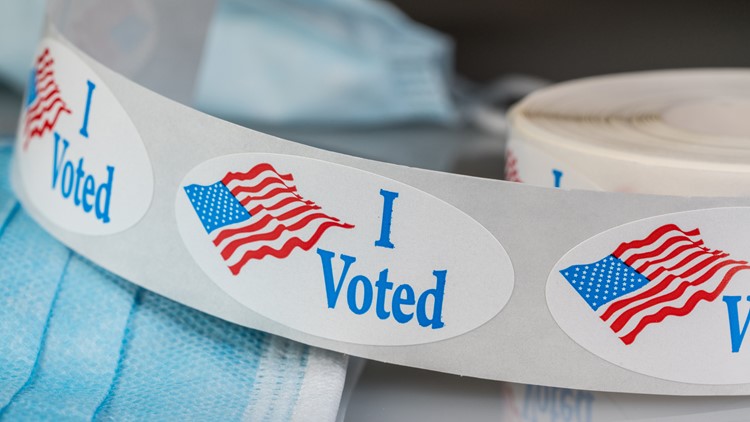Voting in 2020
November 24, 2020
The 2020 election set many records and set the bar high for Americans voting in future elections. COVID-19’s threat to public health has concerned many with the safety of citizens in regards to voting. Because of this, many states have passed measures to expand voting options with the pandemic growing. In New Hampshire, there were only two options: absentee and in-person voting. Other states like Massachusetts have early, absentee, and in-person voting. Overall, the plethora of ways to vote in a unique year like this led to a great turnout.
Absentee or voting by mail permits one to vote early by sending their ballot in. This option is not just available for the general election every four years, but also any election held like the NH state primary in September. The process is as follows: a registered voter would typically request an absentee ballot in the mail and then complete it at home and mail it before the election. Every state offers some sort of mail-in voting in order to guarantee that voters can use their voice if they are not able to make it to the polls. This was a useful and convincing method for those who work or do not feel safe voting in-person and those who live in populated cities. The absentee option also increased voter turnout and engagement on initiatives. However, there is also a downside. Voting absentee is sometimes believed to cause questioning of integrity, benefit a party, or even be lost in the mail. Because of COVID-19, some states like Hawaii voted completely by mail. Across the nation, 65.5 million voted absentee in 2020 (New York Times).
Voting in-person during the pandemic is a challenge, as the voter turnout in the NH primary showed. About 35.9 million Americans voted in-person this year, despite the threat of the coronavirus (New York Times). Many poll volunteers worked many hours on Election Day because of the shortage of volunteers. At polling locations, there were many long lines throughout the nation and poll watchers to monitor voting. In this cycle, a citizen would observe many precautions within a voting site like hand sanitizers, lines six feet apart, and extra space between voting booths. Many voting locations throughout the nation also had a mandatory mask mandate. A registered voter would walk up to the ballot clerk as normal and quickly cast their vote afterward.
Casting your vote early is the last type of common voting utilized in this election cycle. Early voting guarantees a registered voter to cast their ballot before election day. Many states have set records for early voting totals and some even surpassed the total number of votes in 2016. Some view this as not only a convenience but also a way to avoid spending too much time at the polls and staying safe. In Massachusetts, early voting began on October 17 and continued until October 30, but New Hampshire does not have this option. Early voting has been so useful that Texas surpassed its 2016 vote total with all of the proactive action of citizens.
All in all, the most common form of voting continued to be in-person, nevertheless, many Americans voted by mail or early because of the pandemic. Thus, there is an association between the pandemic and options of voting in the 2020 election. New Hampshire was no exception to the general trend of voting in-person as the majority of NH citizens voted at the polls on November 3rd. The absence of the early voting option did not stop New Hampshire from finding a way to perform their civic duty.
Examining how and when citizens of the two main parties voted follows the political agenda of each party. Heading into Election Day, Democrats had an advantage with 43 percent of early or absentee votes compared with Republicans’ 37 percent. After the results were in, the trend followed that most Democrats voted early or absentee rather than Republicans. In terms of the candidates, supporters of Joe Biden were more likely than Trump supporters to vote by mail and were more likely to trust the accuracy of the ballot count. Another interesting statistic is that about 84 percent of registered Democrats who voted absentee have returned them in comparison with 74 percent of Republicans (Politico).
The 2020 election was original and unprecedented in many different ways, however, Americans showed up and voted more than ever before. About 159.8 million turned out to vote in one way or the other on or before November 3rd. In comparison, around 239.2 million Americans were eligible to vote in 2020. This number is the highest turnout rate since 1900 nationally.
The youth played a pivotal role in this election. The Center for Information and Research on Civic Learning and Engagement at Tufts University found that youth voter turnout (18-29) surged by around 8 percent compared to 2016. In total, 53 percent of eligible youth voters cast votes in 2020.
Taking a look at New Hampshire, about 76.5 percent of voters turned out to vote in one way or the other. This would infer that more than 803,000 people have voted (NHPR).
The means of voting expanded throughout this election cycle with absentee, early, and in-person voting. Perhaps it was because of this expansion that the 2020 voter turnout was groundbreaking

